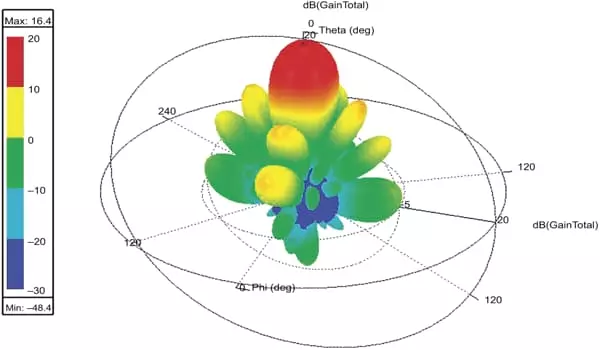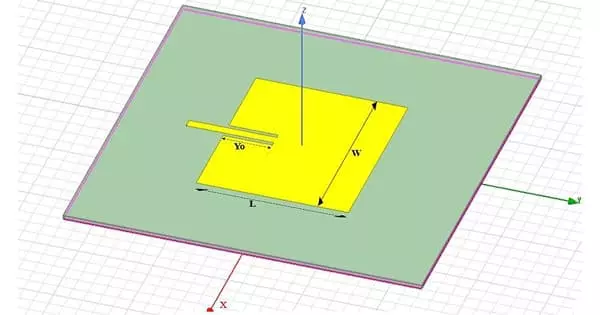Princeton researchers have taken a step toward developing a type of antenna array that could be used to coat the wings of an airplane, as a skin patch transmitting signals to medical implants, or as wallpaper that communicates with the internet of things (IoT) devices. The technology is based on large-area electronics, a method of fabricating electronic circuits on thin, flexible materials that could enable many applications of emerging 5G and 6G wireless networks. The researchers described its development in a paper published in Nature Electronics.
The approach overcomes the limitations of conventional silicon semiconductors, which can operate at the high radio frequencies required for 5G applications but are only a few centimeters wide and difficult to assemble into the large arrays required for enhanced communication with low-power devices.
“People have tried discrete integration of hundreds of small microchips to achieve these large dimensions. But that isn’t practical because it isn’t low-cost, reliable, or scalable on a wireless system-level “Naveen Verma, a professor of electrical and computer engineering and the director of Princeton’s Keller Center for Innovation in Engineering Education, is a senior study author.
What you need is a technology that can natively scale to these large dimensions. We have a technology like that; it’s the one we use for our displays. People have tried discrete integration of hundreds of small microchips to achieve these large dimensions.
Professor Naveen Verma
“What you need is a technology that can natively scale to these large dimensions. We have technology like that; it’s the one we use for our displays”, Verma mentioned computer monitors and liquid-crystal display (LCD) televisions. These employ thin-film transistor technology, which Verma and colleagues adapted for use in wireless signaling.
In a phased array, the researchers used zinc-oxide thin-film transistors to create a 1-foot (30-centimeter) row of three antennas. Phased antenna arrays can transmit narrow-beam signals that can be digitally programmed to achieve desired frequencies and directions. Each antenna in the array emits a signal with a specified time delay from its neighbors, and the constructive and destructive interference between these signals adds up to a focused electromagnetic beam – similar to the interference between ripples created by water droplets in a pond.

A single antenna broadcasts a fixed signal in all directions, “but a phased array can electrically scan the beam to different directions, so you can do point-to-point wireless communication,” said Can Wu, the study’s lead author and a postdoctoral researcher at Stanford University who recently completed a Ph.D. in electrical and computer engineering at Princeton.
For decades, phased array antennas have been used in long-distance communication systems such as radar systems, satellites, and cellular networks, but the Princeton team’s technology could give phased arrays new flexibility and allow them to operate at a wider range of radio frequencies than previous systems.
“Because large-area electronics is a thin film technology, we can build circuits on a flexible substrate over a meter span and monolithically integrate all the components into a sheet the size of a piece of paper,” Wu explained.
The team created the transistors and other components in the study on a glass substrate, but a similar process could be used to create circuits on flexible plastic, according to Wu. An antenna system of this type could be installed almost anywhere. It could enable quick, secure, and energy-efficient communication with a distributed network of IoT devices such as temperature or motion sensors when used as wallpaper in a room.
A flexible surface antenna could also be useful for satellites, which are launched in a compact format and unfold as they reach orbit, and a large area could be useful for long-distance communication with aircraft.
“Because an airplane is so far away, you lose a lot of signal power, and you want to be able to communicate with high sensitivity. Because the wings cover a large area, having a single point receiver on that wing won’t help much, but if you can increase the amount of area capturing the signal by a factor of a hundred or thousand, you can reduce your signal power while increasing the sensitivity of your radio “Verma stated.





